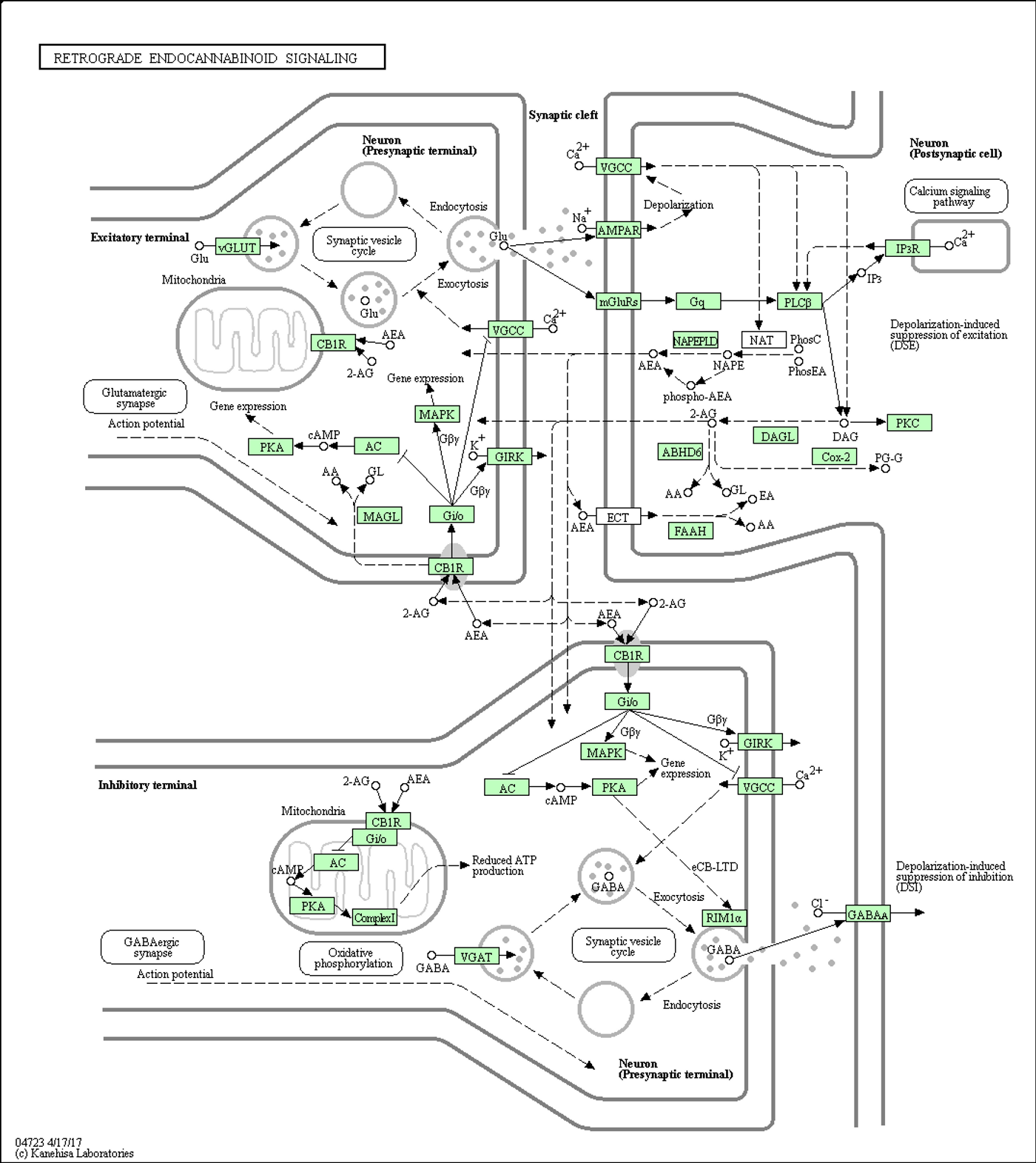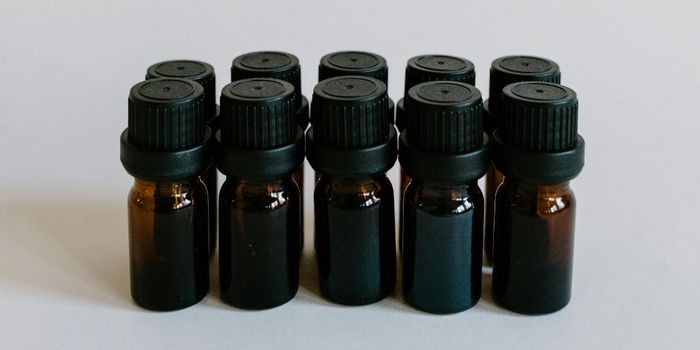Endocannabinoid Performance Through Retrograde Signaling
Endocannabinoids are lipophilic ligands that act as signaling molecules which are synthesized from glycerophospholipids and activated through calcium-mediated or receptor-mediated signaling. They are part of the endogenous cannabinoid system which creates homeostasis throughout the systems of the mammalian body. Five of the most identified endocannabinoids are; anandamide, virodhamine, 2-arachidonoyl-glycerol, noladin ether, and n-arachidonoyl dopamine. All five of these compounds share a common 19-carbon backbone and have specific R-group constituents. The endocannabinoids do not follow the path of a typical chemical synaptic signaling which is for a neurotransmitter to flow from a presynaptic neuron to a postsynaptic neuron and attach to a specific receptor. Instead what is seen with endocannabinoids is the ligands will travel backward from the postsynaptic neuron to the presynaptic neuron. This is referred to as retrograde inhibition.
The endocannabinoid system was the first retrograde system discovered. By binding to a specific G protein-coupled receptor, the presynaptic neurons release of inhibitory transmitter GABA neurotransmitters, and the excitatory neurotransmitter glutamate is inhibited. This lends reason to the role of endocannabinoids as a way for neurons to be able to regulate the strength of their synaptic inputs. The depolarization-induced suppression of inhibition and excitation is performed by inhibiting Ca2+ channels. Endocannabinoids mediate short- and long-term forms of plasticity.
In order to get a neuron to fire, excitatory neurons use anterograde signaling which causes calcium channels to open in the postsynaptic neuron. This alters the charge of the cell and produces an action potential. The calcium that flows into the postsynaptic neuron also activates an enzyme that produces endocannabinoids. When the calcium influx is healthy, 2- arachidonoyl-glycerol is produced, if it is not healthy anandamide is produced. When one of these ligands are manufactured, it instinctively is released back into the synapse where it travels in the opposite direction. At the axon, it binds to the CB1 receptors and causes the cell to produce an inhibitory response which is created by anandamide or an excitatory response which can be generated with 2-arachidonoyl-glycerol.
Retrograde signaling increases action potential from the presynaptic neuron, which then increases the number of receptors at the postsynaptic neuron. This occurs in order to illicit binding with the neurotransmitters being released at the presynaptic neuron. This will then cause another increase of neurotransmission until a strong communication and higher resolution synapses are formed and plasticity is achieved.
Activity-dependent synaptic plasticity is a feature of hippocampal synapses, and the hippocampus has a tremendous expression of CB1 receptors. The endocannabinoid 2-arachidonoyl-glycerol decreases inhibitory GABA neurons in the hippocampus which is responsible for deleting information from our brain. The presence of this endocannabinoid suppresses this deletion of information, allowing the neurons to create plasticity due to increased action potential. Not only may the endocannabinoid system impair short-term memory, but it also improves long-term memory.
Not only does retrograde inhibition within the endocannabinoid system mediate synaptic plasticity, the endocannabinoid system is itself subject to plastic changes. Synaptic endocannabinoid signaling is being found to be much more complex than originally thought. It is seen that the endocannabinoid system is a powerful regulator of synaptic function throughout the central nervous system.
Sources:Cerebrum, KEEG, Current Biology, Neuron, Medscape, Vice









